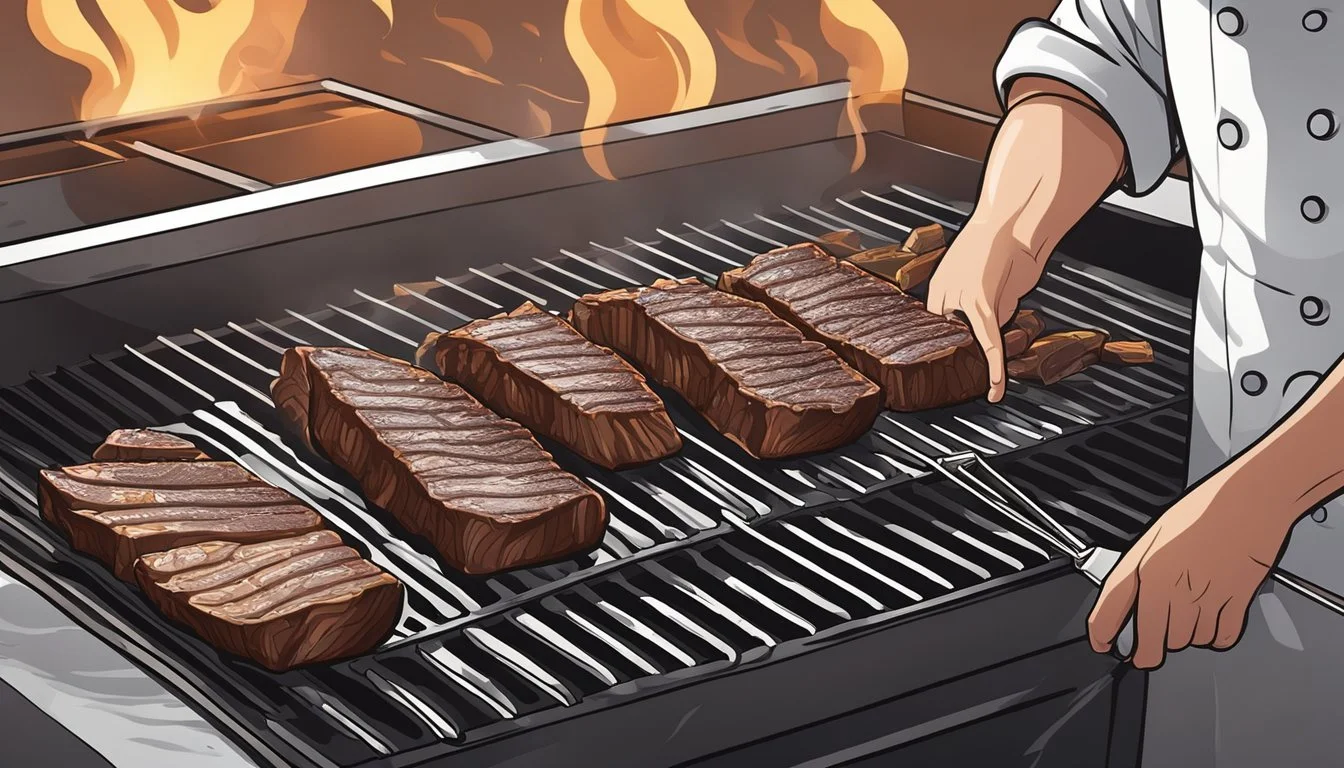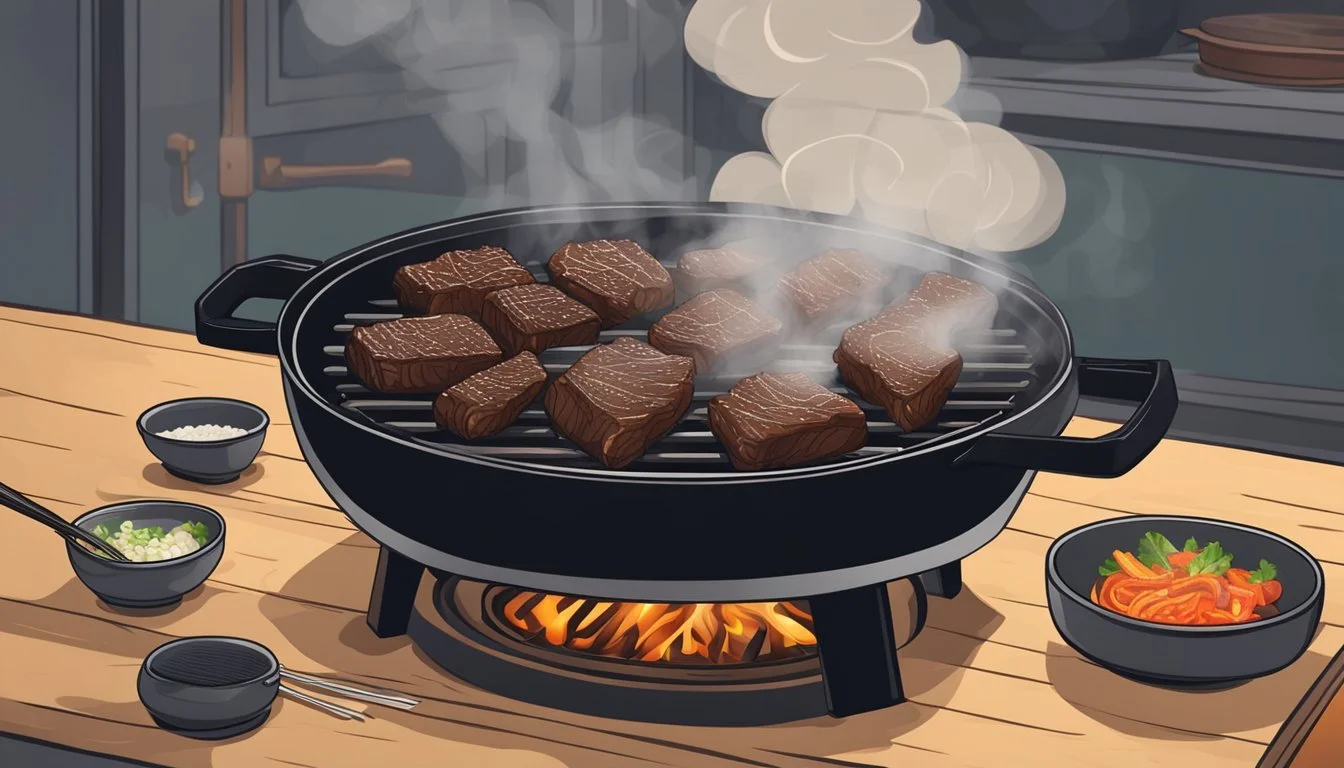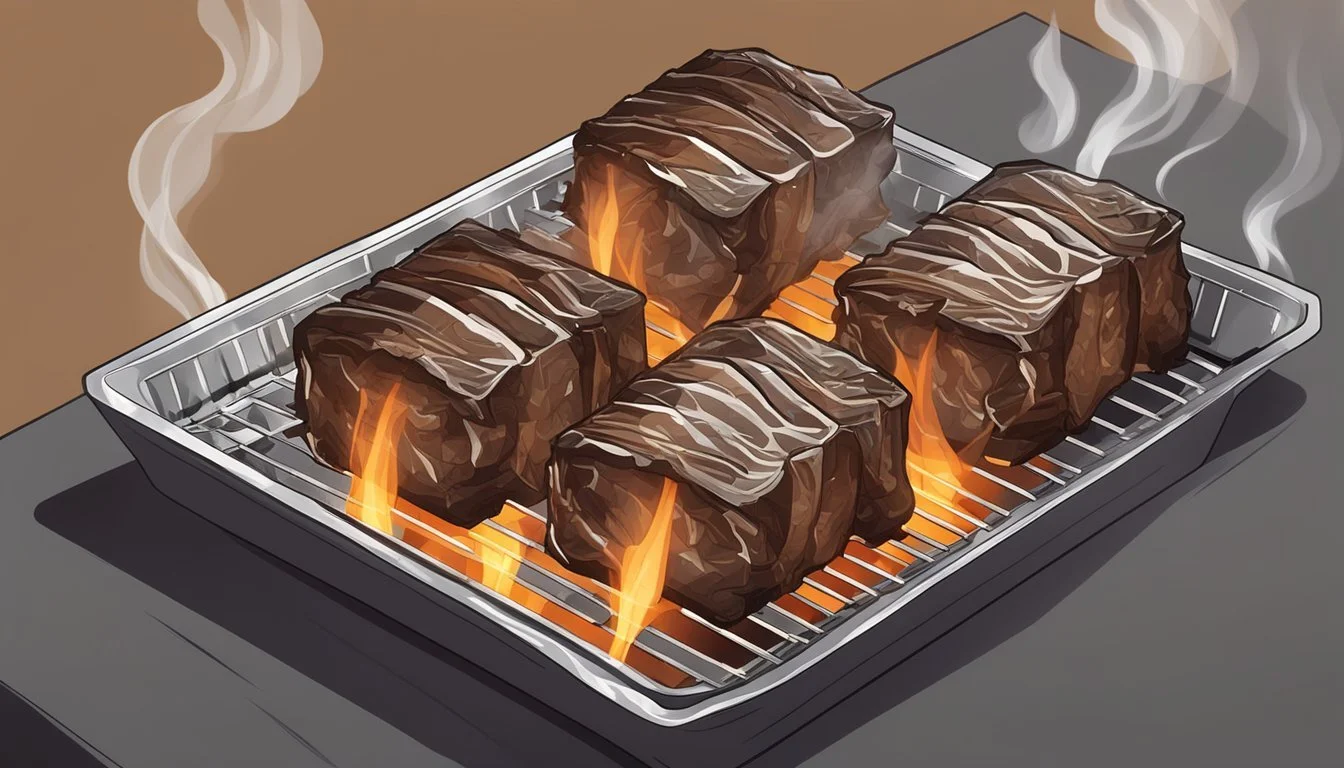Best Way to Reheat Korean BBQ Short Ribs
Keeping the Smokiness Intact
Korean BBQ short ribs, known for their tender texture and distinctive smoky flavor, are a beloved dish that's as enjoyable the next day as it is fresh off the grill. While the challenge of reheating without sacrificing quality often deters enthusiasts from savoring leftovers, there are methods to preserve the essence of the dish. By using the proper reheating technique, one can ensure that the smoky taste and succulence of the ribs remain intact, making the meal just as delectable as it was originally.
The secret lies in the approach taken to warming up the ribs, retaining moisture, and reactivating the flavors that define a good Korean BBQ. The process involves gentle heating, complemented by the use of liquids and appropriate coverings to trap moisture. This guide presents the best strategies to reheat Korean BBQ short ribs while maintaining their signature smoky flavor and juicy texture, ensuring that the dish remains a culinary delight even after a round of refrigeration.
Understanding the makeup of short ribs helps in choosing the right reheating method. They are rich in connective tissues and fats, which, when cooked slowly, contribute to their flavor and tenderness. A reheating method that mimics this slow cooking process can help preserve these qualities. Hence, one must be mindful of temperature and technique to avoid drying out the meat or turning it tough, ensuring that each bite offers a reflection of the original recipe's appeal.
Selecting the Right Reheating Method
The key to successfully reheating Korean BBQ short ribs lies in choosing a method that retains the meat’s moisture and texture. In this section, we explore three different techniques for reheating: oven, stovetop, and microwave.
Oven Reheating
To reheat Korean BBQ short ribs in the oven, one should:
Preheat the oven to 350°F (175°C).
Place the ribs on an oven-safe dish or baking sheet.
Cover the dish with aluminum foil to seal in moisture.
Heat for about 10 minutes, or until thoroughly warmed through, avoiding overcooking.
Stovetop Reheating
Using the stovetop method involves:
Heating a pan on medium heat and adding a small amount of oil.
Placing the short ribs in the pan once the oil is hot.
Reheating the ribs on a lower heat setting to prevent drying out, turning occasionally for even reheating.
Microwave Reheating
For a quick method:
Place the short ribs in a microwave-safe container.
Cover loosely with a lid or plastic wrap to allow steam to escape and keep the ribs moist.
Microwave on medium power in short intervals, checking regularly to prevent the meat from becoming tough.
Preparing Korean BBQ Short Ribs for Reheating
Proper preparation of Korean BBQ short ribs ensures the meat's rich flavor and tender texture are maintained during the reheating process. Precise thawing, marinating, and prepping methods are key for ideal results.
Thawing and Marinating
If the leftover Korean short ribs have been stored in the refrigerator, one must bring them to room temperature gradually to ensure even reheating later on. Thawing them in the fridge for several hours or overnight is recommended. For those that have been frozen, a 24-hour thaw in the refrigerator suffices.
Once thawed, inspect the ribs for any loss of marinade and if necessary, reapply a mixture confirming to their unique flavor profile. A traditional Korean marinade often includes soy sauce, sugar, and a variety of seasonings which complement the smoky barbecue taste. Ensure each rib is evenly coated to accentuate the flavors upon reheating.
Prepping the Meat
Before reheating, it's pivotal to gently pat the Korean short ribs dry to remove any excess marinade on the surface. This step prevents burning and aids in achieving a uniform texture once heated. Confirm the internal temperature of the meat reaches the safe point of 165°F (74°C) during the reheating process by using a meat thermometer. Preparing the meat correctly at this stage sets the foundation for succulent and flavorful ribs that are enjoyable down to the last bite.
Avoiding Common Reheating Mistakes
Reheating Korean BBQ short ribs requires precision to avoid compromising their distinctive smoky flavor and texture. Below are targeted strategies for preventing overcooking, maintaining succulence, and ensuring even reheating.
Preventing Overcooking
Overcooking is the primary culprit in transforming succulent short ribs into dry, tough meat. To prevent this, one should use a meat thermometer to achieve an internal temperature of 165°F, which is safe for consumption yet preserves tenderness. Techniques like reheating in a preheated oven or on a low-medium stovetop are preferable, as they offer controlled heat.
Tips:
Preheat the oven or pan before placing the ribs inside.
Monitor the temperature regularly with a meat thermometer.
Remove the ribs from heat as soon as the ideal temperature is reached.
Maintaining Succulence
Preserving the fatty, moist nature of the ribs is paramount for an enjoyable eating experience. Short ribs should be reheated with added moisture in the form of broth, sauces, or even water to replenish lost juices and prevent drying out.
Tips:
For oven reheating, add a small amount of liquid to the dish and cover with foil.
When using a pan, a splash of oil or sauce can aid in maintaining the ribs' moistness.
Ensuring Even Reheating
Uneven reheating may result in parts of the ribs being overcooked while others remain cold. It's essential to heat the ribs evenly whether in an oven or on a stovetop.
Tips:
Cut the ribs into smaller, even-sized portions for uniform heat distribution.
Rotate or flip the ribs periodically during the reheating process to ensure all sides receive equal heat exposure.
By following these nuanced approaches, one can successfully reheat leftover short ribs while retaining their original quality—fatty, tender, and bursting with smoky juices.
Serving and Presenting Reheated Short Ribs
Once Korean BBQ short ribs are reheated to perfection, presenting them in an appetizing manner is crucial. Plating should highlight the ribs' smoky flavor, while garnishes and sides should complement the overall richness of the dish.
Plating and Garnishes
Plating: Arrange the short ribs on a plate with precision. Ensure each piece is visible and not overcrowded to maintain an appealing aesthetic.
Garnishes: Sprinkle sliced green onions on top for a fresh contrast. A light side of fresh fruit can add a vibrant touch to the plate.
Serving Suggestions
For a complete meal, accompany the short ribs with a selection of side dishes that enhance their robust flavor:
Side Dishes: A bowl of steamed rice or a serving of glass noodles is a traditional fit. Include a variety of pickled vegetables or a simple salad to balance the richness.
Vegetables: Steamed or buttery roasted vegetables provide texture and complement the smoky taste of the meat.
Incorporating these elements not only ensures the dish is delicious and visually appealing but also offers a well-rounded dinner experience.
Storage Tips for Korean BBQ Short Ribs
After savoring the succulent taste of Korean BBQ short ribs, proper storage of leftovers is crucial to maintaining their flavors and texture for later enjoyment. The two main focuses should be on the techniques of storage and how to best retain the ribs' smoky and marinated flavors.
Proper Storage Techniques
For leftover beef short ribs, placing them in an airtight container is key to maintaining freshness. If a container is not available, one can also use a heavy-duty ziplock bag to ensure that the ribs are sealed off from excess air. Storing these ribs in the refrigerator as soon as possible helps inhibit bacterial growth. The ribs should be stored within two hours of cooking, which is especially important if the ribs are marinated; as the marinade can break down the meat if left unrefrigerated for too long.
Fridge Storage:
Time frame: Keep for 3-4 days.
Temperature: Refrigerate at or below 40°F.
Maximizing Flavor Retention
When it comes to flavor preservation, the integrity of the marinade plays a significant role. Regardless of whether the ribs are stored in an airtight container or a ziplock bag, it's beneficial to pour a bit of the leftover marinade over the ribs. This not only keeps them moist but also helps sustain the rich, smoky flavors characteristic of Korean BBQ. The refrigerator should be kept at a steady temperature to prevent fluctuations that could otherwise alter the flavor profile of the meat.
Tips:
Store in the coldest part of the fridge, usually the bottom shelf.
Keep ribs flat and avoid stacking to ensure even cooling.
Exploring New Ways to Use Leftover Short Ribs
Transforming leftover Korean BBQ short ribs into mouthwatering dishes requires a blend of creativity and culinary passion. These savory morsels, known as kalbi, lend themselves to various dishes that go beyond simply reheating.
Integrating into New Recipes
One can infuse new life into these flavorful cuts by incorporating them into new recipes.
Tacos: Shred the leftover ribs to create a Korean-inspired taco filling. Garnish with a slaw or kimchi for added zing and nutrition.
Fried Rice: Dice the ribs and stir them into fried rice, blending the smoky flavor throughout.
Pasta: Chop the short ribs and simmer with red wine and a tomato base to create a robust pasta sauce.
These reinventions make use of the ribs' rich taste and bring a unique twist to traditional meals.
Creating Rich Broths and Soups
Leftover Korean BBQ short ribs can be the foundation for nourishing broths and soups. Here's how:
Beef Broth: Simmer the bones with aromatic vegetables to extract deep flavors for a homemade beef broth.
Soup: Transform the broth into a Korean-style soup by adding ingredients like tofu, vegetables, and glass noodles.
By adding red wine or a touch of soy sauce, the broth develops a more complex, savory character, suitable for a stand-alone soup or as the base for heartier stews.
Additional Tips for Enhancing Flavor
When reheating Korean BBQ short ribs to retain their smoky flavor, a strategic approach to seasonings and sauces can elevate the dish. These additions can reintroduce the rich, authentic flavors that are characteristic of Korean cuisine.
Choosing the Right Seasonings
To enhance the ribs' flavor, one should consider the key Asian spices and condiments that complement barbecued meats. Sesame seeds add a nutty crunch and are commonly sprinkled on top of Korean dishes for both taste and presentation. Marrying the ribs with fine slices or grated ginger and minced garlic during reheating can infuse them with aromatic undertones, highlighting the meat’s tenderness. Utilizing these classic seasonings helps to reconstruct the dish’s traditional taste profile.
Utilizing Sweet and Tangy Elements
Combining both sweet and tangy flavors can work culinary magic on the caramelized exterior of the ribs. Asian pear, a common ingredient in Korean BBQ marinades, tenderizes the meat and brings a subtle sweetness to the foreground. Kiwi, with its tenderizing enzymes and vibrant tanginess, can similarly be applied to enhance the flavor. A light brushing of barbecue sauce, balanced with sweet and tangy notes, while reheating can reintroduce moisture and create a glaze that replicates the fresh-off-the-grill look and taste.





